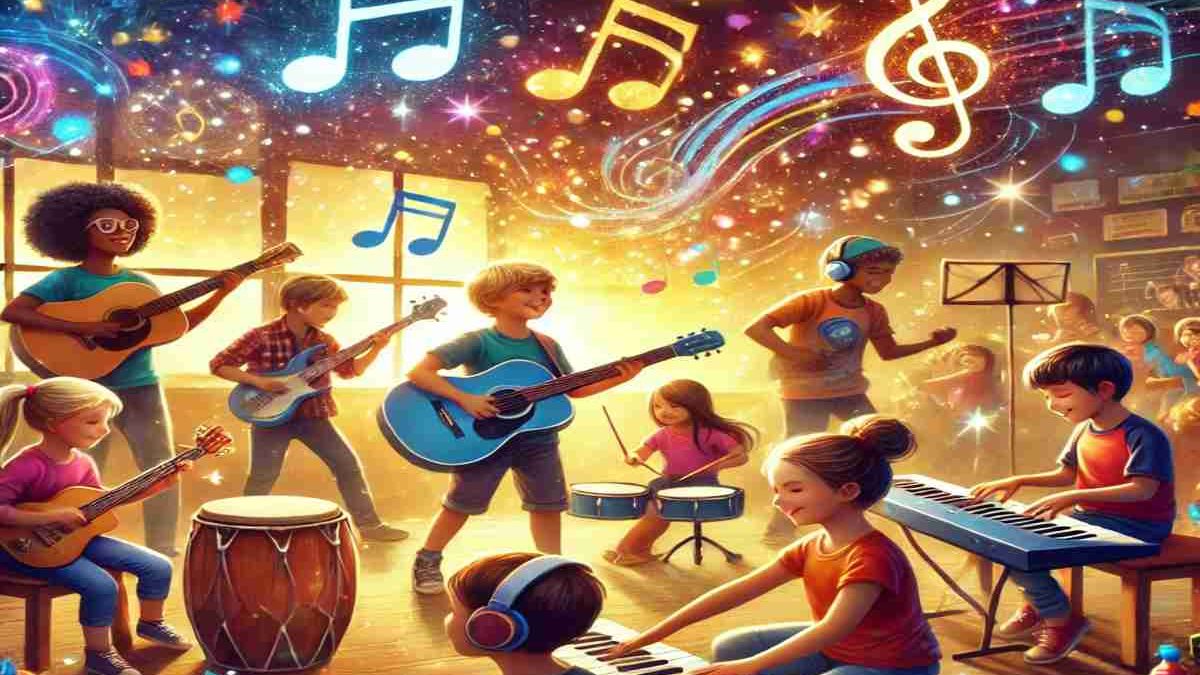Table of Contents
Melody Meets Literacy for Early Learning Success
Imagine stepping into a classroom where the walls hum with melodies and the air is alive with the rhythmic clapping of tiny hands. Could this vibrant atmosphere hold the key to unlocking your child’s linguistic potential? As research increasingly reveals, the marriage of music and literacy is no mere coincidence but a powerful catalyst in early language development. When children immerse themselves in musical activities—be it singing a spirited nursery rhyme or playfully chanting rhythmic verses—they are not just having fun; they are nurturing a critical ability: the recognition and manipulation of phonemes. These skills lay the foundation for reading success, with studies showing a child’s phonemic awareness can predict up to 50% of their reading proficiency by first grade. By seamlessly weaving music into the fabric of play and education, you’re not just fostering a love of language but paving a harmonious path to literacy.
Rhythms and Rhymes Bring Literacy to Life
Bringing music into literacy activities can transform language learning into an exciting journey for children, both at home and in school. Imagine collaborating with teachers to blend music seamlessly into the curriculum, creating a natural intersection of literacy and music education. At home, you might use popular songs as a springboard for expressive writing projects, offering a fun and relatable context for your child’s language development. In the classroom, setting up sound labs with everyday objects allows students to explore rhythm and sound, which is an excellent tool for learning transitions. By embedding music creatively into learning activities, you can offer a multifaceted approach that not only enhances literacy but also enriches the overall educational experience.
Songs and Sounds Supercharge Language Growth
Incorporating rhythm and rhyme into songs is more than just entertaining—it’s a powerful tool for boosting vocabulary and comprehension. These musical elements engage both the analytical and imaginative parts of the brain, creating a memorable learning experience. Rhythm helps children grasp sentence structures and stress patterns, while rhyme enhances their understanding of vocabulary and pronunciation by highlighting similarities in word endings. This dual engagement makes language learning enjoyable and significantly aids in the retention and recall of new concepts. As a parent or educator, using songs with clear rhythmic patterns and rhymes can be a valuable addition to your child’s language development toolkit.
Turning Challenges Into Opportunities in Music-Enhanced Literacy
Implementing music-based literacy programs can be challenging, but with strategic planning, these hurdles can be overcome. One common issue is coordinating between music and homeroom teachers. Encouraging collaboration ensures that music is smoothly integrated into literacy instruction. For example, music teachers can work alongside their colleagues to design activities that enhance phonemic awareness through melody and rhythm. Budget constraints may also pose a challenge, but creative solutions like utilizing existing music resources or engaging the community can alleviate financial pressures. By addressing these challenges proactively, you can create a dynamic educational environment where music and literacy reinforce each other, enriching students’ learning experiences.
The Multisensory Symphony of Music and Reading
Exploring music’s role in multisensory learning reveals its significant impact on literacy development. Music not only boosts reading comprehension and phonemic awareness but also improves verbal memory and vocabulary. By incorporating musical elements like songs about the alphabet, children engage their auditory and visual senses simultaneously, benefiting English language learners and those with reading disabilities. Research shows that combining these sensory experiences activates multiple brain regions, strengthening the neural pathways related to reading. By weaving music into your teaching strategies, you create a richer, more interactive learning environment that complements traditional literacy methods, offering all students a more comprehensive educational experience.
Harmonizing Education Through Teacher-Musician Partnerships
You might be surprised by the power of collaboration between musicians and educators in developing literacy among students. By having music teachers work closely with homeroom teachers, schools can create an integrated curriculum that uses music education as a dynamic tool to enhance literacy skills. Incorporating popular songs as a platform for expressive writing not only makes learning more engaging but also reinforces comprehension and writing capabilities. Using songbooks in the classroom provides a unique method to teach print concepts and word study, offering students a hands-on learning experience that can significantly improve reading fluency and vocabulary. This cooperative approach doesn’t just boost literacy skills but also enriches students’ overall academic journey by creating a vibrant and interactive learning environment.
Bringing Learning to Life With Music Videos
Combining visual and auditory components in a video can significantly enhance a child’s engagement with musical content. By pairing music with dynamic visuals, children find it easier to follow along and absorb the material, strengthening their literacy skills through active participation. Utilizing special effects and dynamic camera techniques, similar to those used in music videos, can captivate children’s attention and foster an immersive learning experience. To facilitate this process, you can use an online tool to create free videos that enable you to add soundtracks, adjust video speed, animate elements, and much more, ensuring your creation is both engaging and educational. By merging entertainment with education, you pave the way for a multi-sensory experience that supports children’s cognitive development.
The symphony of music and literacy holds the potential to transform learning landscapes for young minds. By embracing the melodious synergy of sound and language, anyone—from teachers and parents to community leaders—can inspire a generation of children to discover the joy of language through music. This harmonious integration not only nurtures essential literacy skills but also enriches the educational tapestry with creativity and innovation. Let us invite music to be our partner in education, crafting unforgettable learning experiences and shaping lifelong learners who sing the language of a brighter future.

